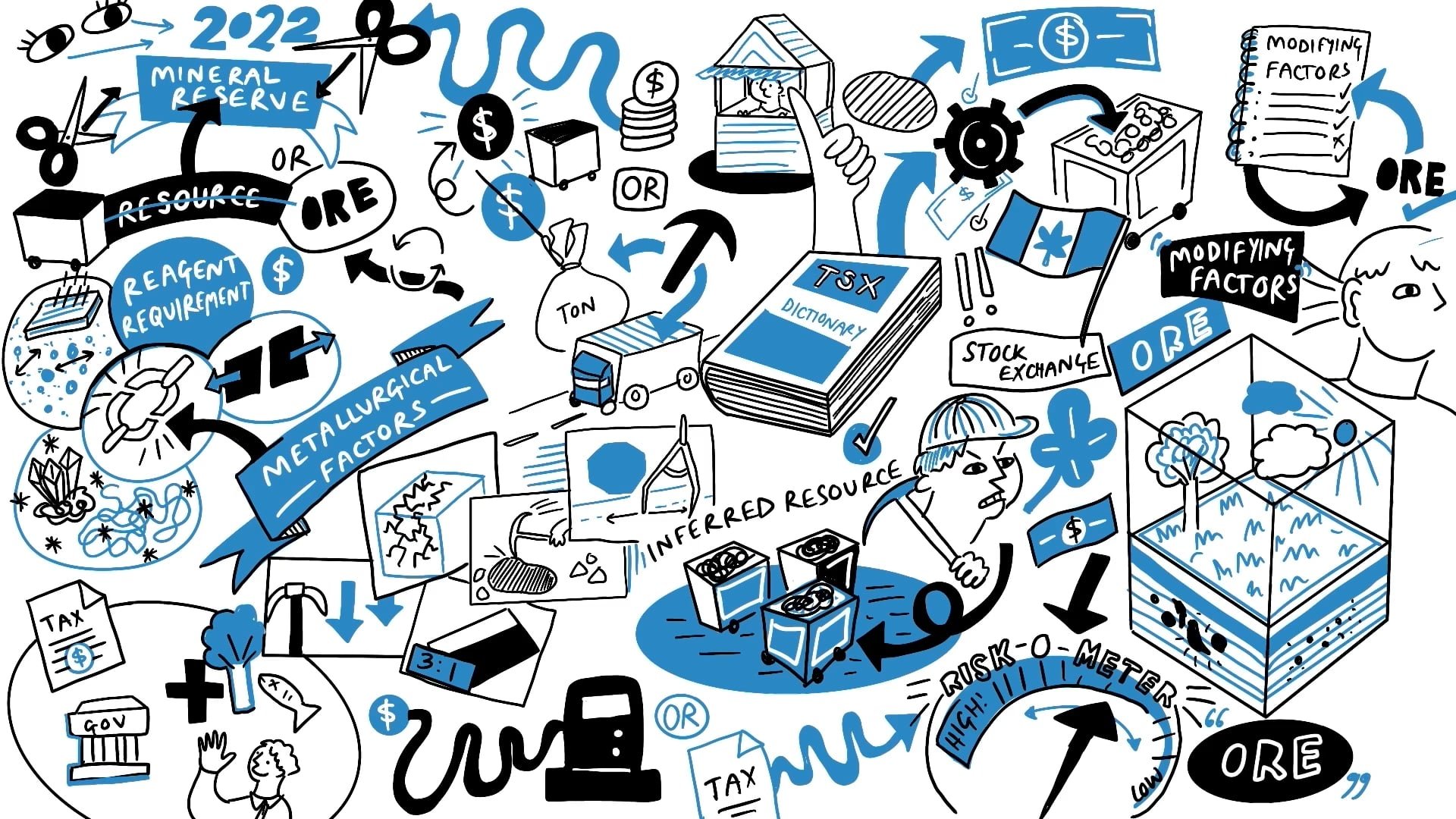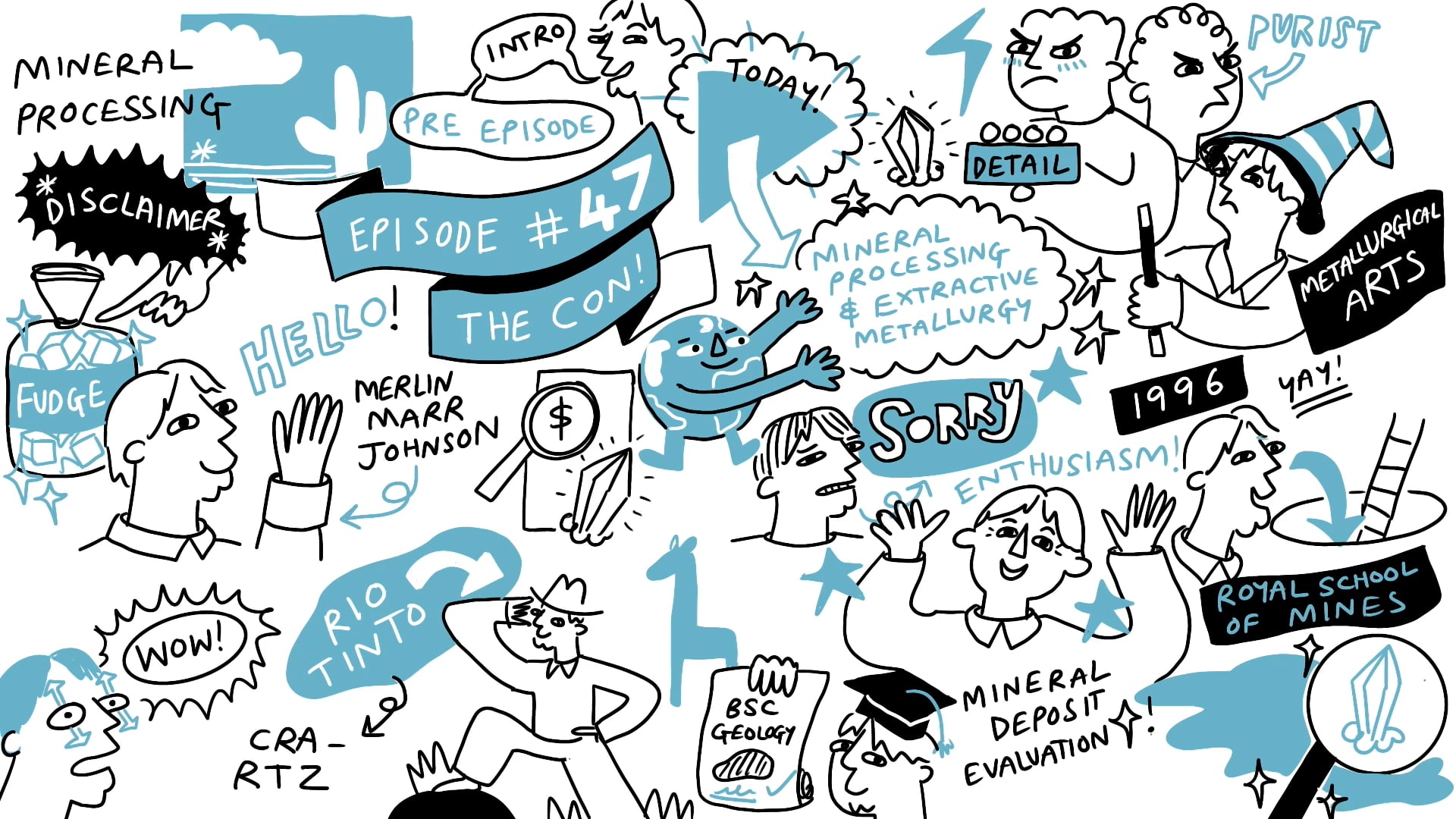Mining: Open-Pit & Underground Mines

More episodes
Transcript
Hello and welcome to another episode of the Con. Today I'm going to be talking about mining and mining methods. Once you've found those positive internal studies, the next thing you've got to do, and perhaps the most important part of the process, you've got to get it out of the ground is absolutely why we're here. That's why it's called the mining sector because that's what you're supposed to do. Surprisingly, not that many companies are actually any good at it. It sounds like a relatively simple thing to do, get stuff out of the ground but actually, there are quite a few ways that you can trip up. When one looks at mining and getting things out of the ground there are 2 key factors which determine everything else in the mining methods, that is the scale of your deposit and the other is the grade of the deposit. Everything else kind of follows on from that the logistics, commodity prices, the physical terms, the ground conditions, they all have a role to play. But fundamentally, you're talking about scale and grade. One of the earliest things that you have to do when you're looking at mining is you have to try and work out what is going to be the most appropriate way for you to mine the deposit that you've got in front of you. And they're all different kinds of mining but essentially, you're looking at either an open-pit or underground. I'm talking mostly about hard rock here. There are soft rock mining methods such as alluvial or placers or hydraulic mining, when you're dealing with a very weathered product, or when they're all has already effectively been mined by erosion and mother nature and winnow down, or you're doing solution minded key division for hard rock mines is really going to be in an open-pit or an underground mine.
Open-pit
If you're in an open-pit, what you need to understand is the strip ratio and how your ore bodies is going to change with depth at the surface. It might have been weathered your rock the sulphides or the metal minerals in it that you're trying to mine may have been oxidised by atmospheric conditions, rainwater and oxygen. You might go through a transition zone as you go slightly deeper where you've got some material which is still oxide but some material which is still sulphide, it hasn't been exposed to the surface and that was probably called the transition zone. And in some deposits that transition zone can be thick, or you can just go straight from oxide abruptly into fresh rock which is sulphide. And occasionally you can have fractures and faults which pull oxidised waters right down deep and so you can have largely sulphide material, but you can still get oxide material several 100m below the surface. I mentioned the word strip ratio. What I mean by that is, when you're mining ore, to get access to the ore, you probably have to move some waste material which has got no value in it, it doesn't have the value mineral that you're trying to mine in it. And you have to move a tonne of that, for example to one mine of ore, and the ratio is how many tonnes of waste you have to mine to get to your tonnes of ore. So if you have to move 5t of waste to get to 1 t of ore for the strip ratio of 5:1, because it can be 5:1 you strip away five times to get to the 1t of ore. So we're going to strip ratios a bit more. But basically, in an open pit, you've got to understand your strip ratio. And you've got to understand the kind of rocks you're dealing with, and how you're going to get down to the bottom of your pit and the logistics and the whole engineering aspects of that.
Underground Mine
In an underground deposit. There are many methods to choose from. The way that you select the appropriate mining method will depend on the depth of your ore body, how steeply it falls away into the ground below the geometry of your ore body, the thickness and its width. The breadth of the strike length of your ore body, the depth that your ore body continues to, its morphology underground. Is it tabular, does it have plunging shoots of high-grade material, so many aspects of the shape of the ore body in 3 dimensions underground? And then on top of that, you've got to account for at least understand many, many other aspects of the way that the ore presents itself underground. For example, faults, most ore bodies in the world are linked to faults. I can't think of a single ore bodies that doesn't have faulting in it. And it can create a rich zone, it can be a factor in the location of the ore but equally it can be a conduit for water. And it can be an area where there's been movement over the years and so you might have rock fractures, you might have for clays generated through Cataclasis which is the grinding movement of rocks upon each other along a fault surface or it might just be because the water penetration has come through and that has degraded the quality of the rock but essentially faults mean you might get richer or you might get water but you might get less stability and they call them fault gouges or friable and incompetent rock. Most mines are related to faults and faults are related to weakness and so you've got rock weakness and instability and that is going to affect the way that you mine and the geometry and the methods that you use.
So, if you're underground, and you want to be safe, your ground conditions and your roof stability and your floor storage, and your water stability is absolutely key for production rates and productivity. Let's just work on the basis that we're dealing with a standard hard rock ore deposit. One of the first decisions you need to make is whether to go underground or to tackle this as an open pit. It's your first and your biggest decision. There comes a tipping point, when the economics of going from open pit become less good to the economics of going underground. That analysis, that tipping point, I mean, it's a huge decision and it should be decided later on the scoping study level or possibly in the PFS level. What you're trying to do is trying to save the Capex and the simplicity of an open pit are attractive, it's much in ‘easier to do an open pit operation than it is to go underground’. So the holy grail is something which has high-grade sitting at surface, and that you can mine for a low cost and with low risk of death, because open pits are inherently safer than underground. But there comes a time when your ore body, let's say it's a tabular ore body, for example, a steeply dipping vein deposit, high-grade Gold is relatively narrow, it's relatively tabular, and it goes down a depth. Now obviously, when you're trying to mine an open pit down the depth, you're going to have to start moving more and more material to get to the deeper part of the vein. So depending on the width of your ore body, that will determine how far down you can go with an economic pit. And that's really governed by your strip ratio.









































.jpg)
.jpg)
.jpg)
.jpg)















